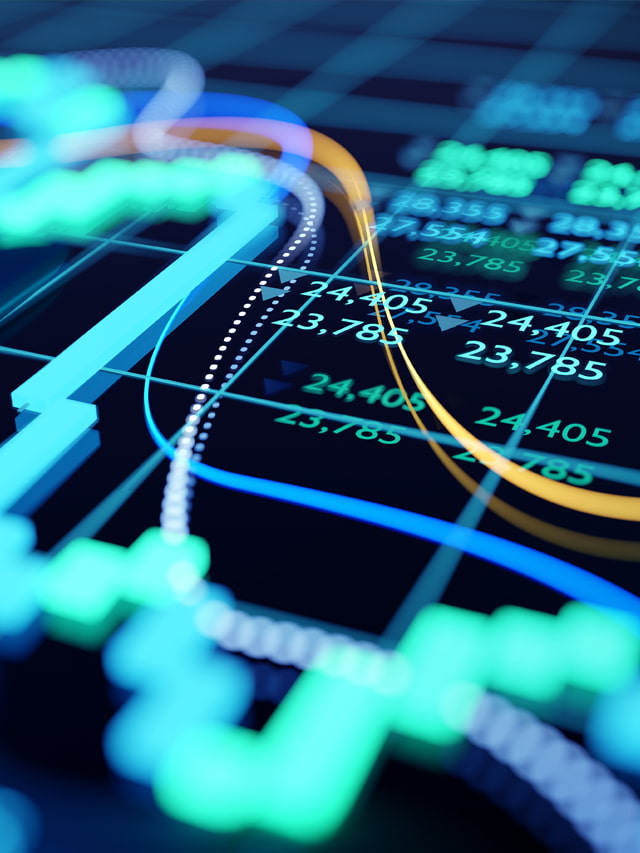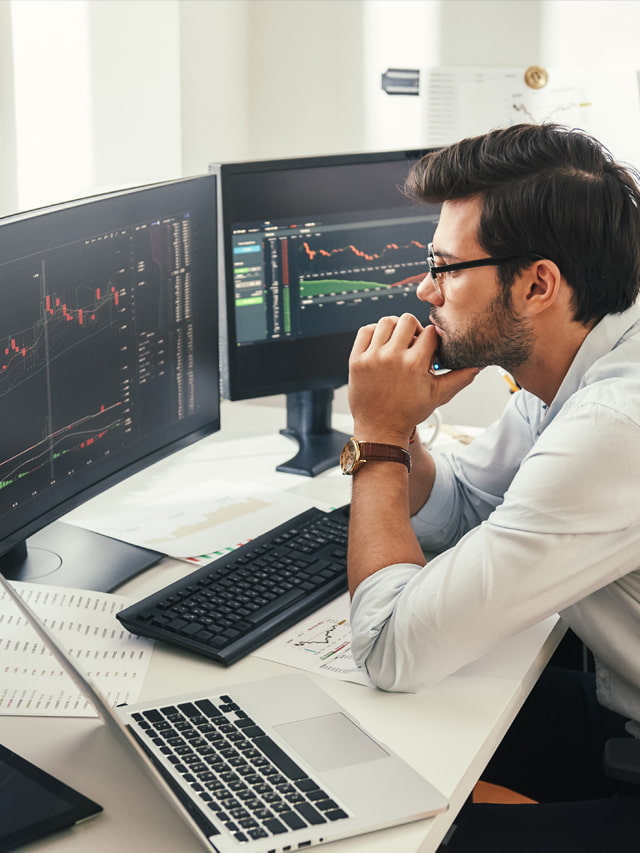Every time you sip your morning coffee, fill up your car with gas, or admire a piece of gold jewelry, you are interacting with the fascinating world of commodities and forex trading, commodities which you can trade. Behind these everyday items lies a global market where fortunes are made and lost on the trading volatility. People buy and sell every minute of every day, and so many things affect the commodities market, including interest rates, weather patterns that can trigger price swings worth millions, or even smart traders who find opportunities in the basic materials and services that power our world.
But what if you could do more than just consume these commodities? In short, what if you could understand and participate in these markets? Would you be interested in profiting from the same price trends and information that can affect your daily life? Because, whether you understand this or not, commodities can be affected by so many things, like the surge in crude oil prices during global tensions, companies going bust, or the impact of drought on grain markets. You get plenty of opportunities to invest and to make a profit if you understand how these complex markets work.
If the commodities market appeals to you but you don’t have a clear grasp of how it functions, this helpful guide will get you started. The commodities market is immense and includes precious metals as well as agricultural products. A commodities course will cover everything about fundamental analysis and the risks you’ll need to rise above to succeed, getting you started on your trading commodities experience.
What Is Commodities Trading?
Trading in commodities is one of the oldest forms of market and bank exchange, dating back to the earliest days of human civilization. Today, it remains a fundamental component of the global financial system, where raw materials and primary goods are bought and sold in standardized contracts. Unlike stock trading, where an investor is buying shares in a company’s stock, commodities trading focuses on physical assets that form the building blocks of our economy. That means gold, iron, wheat, corn, rice, coffee, cocoa, aluminum, steel, and even orange juice all come into play.
The commodities market is divided into two main categories.
Hard commodities, which are natural resources that must be mined or extracted, like gold, silver, oil, copper, and gasoline and its derivatives. These often act as indicators of economic health and industrial activity.
Soft commodities, on the other hand, are agricultural products like cattle and livestock, which range from wheat, coffee, corn, and cotton. These are renewable and limited resources, yet their prices can be highly volatile due to several factors like what type of weather conditions there are, seasonal changes, and global demand patterns.
How Commodities Trading Works
The mechanics of buying and selling commodities are different than those of other financial markets. Most commodity trading occurs through futures contracts, where buyers and sellers agree to exchange a specific amount of a commodity at a predetermined price on a future date.
This system evolved to help producers and consumers hedge against price fluctuations, though today, it attracts many speculative traders as well. Large corporations and producers pay for the commodities they will need in the foreseeable future at a price agreed upon today. Large airlines, for example, buy the fuel they will need months, if not years in advance.
Spot trading, which is where you buy or sell for immediate delivery, exists alongside the futures market but is less common among retail traders. Modern traders can also access commodities through Exchange-Traded Funds (ETFs) and Contracts for Difference (CFDs), which offer exposure to a trading commodity without the need to handle physical delivery.
Market supply and demand fundamentals affect commodities pricing. Unlike stocks, where company performance and market sentiment drive prices, commodity prices in general respond to physical supply constraints, weather patterns, geopolitical events, and global economic conditions. When you start trading in commodities, you will need to start following what affects commodities prices to understand how you can make money.
Why Trade Commodities?
What makes trading in commodities so interesting?
Hedge against inflation
Commodities are a powerful hedge against inflation. As the value of paper currency decreases, a physical asset will often maintain or increase its worth and protect its investors’ purchasing power over time. Gold, in this case, has historically served as a store of certain value during any economic uncertainty.
Portfolio diversification
Portfolio diversification is another reason why people have always traded in commodities. Because the commodity price moves independently of stocks and bonds, adding commodities to your investment portfolio can help reduce the overall risk of losing. This negative correlation with traditional assets is particularly valuable during market downturns as it smoothens out bumps from other investments.
Liquid market
The commodities markets rank among the world’s largest and most liquid trading venues. This high liquidity means traders can generally enter and exit positions easily. The market is so vast that there are almost always opportunities for profits that don’t require time delays. The leverage available in futures trading can amplify returns, though it also increases high risk. That’s where a commodities trading course comes in handy and prepares you if things go awry due to leverage.
How to Get Started with Commodities Trading
Brokerage
First, you will need to select a trusted brokerage that offers a full choice of commodities trading features.
Look for a trading platform that will provide research tools, competitive fees, and excellent customer support. The best brokers offer educational resources and demo accounts for practice trading.
Set up your trading account
When you are ready, you can set up your first trading account which involves more than just depositing some money from a fund. You will need to follow and understand margin requirements, contract specifications, and trading hours for different commodities. Each commodity has its own trading characteristics and seasonal patterns that affect price movements, especially regarding soft commodities.
Market analysis tools
You will need essential market analysis tools such as real-time price feeds, charting software, and access to a news service focused on commodity markets. Professional traders often combine multiple data sources to log a complete picture of market conditions and identify trading opportunities.
Commodities Trading Strategies
Fundamental analysis
Your trading strategy starts with a fundamental analysis of the commodities markets, focusing on supply and demand factors that all influence price levels. This includes monitoring weather patterns for agricultural commodities, studying geopolitical developments for energy products, and tracking industrial demand for metals. For example, if rains fail in western Africa, cocoa prices may go way up. If a new gas location is found, gas production will increase and the price will lower in the future.
Technical analysis
Technical analysis helps traders identify potential entry and exit points through chart patterns and indicators.
While many technical tools used in stock trading apply to commodities, some indicators are particularly relevant in the commodity market. These include the Relative Strength Index (RSI) for identifying overbought or oversold conditions and moving averages for trend identification.
Risk management
Risk management is always pertinent in financial trading, and that includes commodities markets. Actually, risk management is more important in the commodities market because the market is inherently volatile.
Successful traders always use stop-loss orders to limit any underlying loss and take-profit orders to secure a gain. Position sizing and portfolio balancing help you when investing so that no single trade can significantly damage your trading capital.
Common Mistakes to Avoid
Overleveraging
Overleveraging is one of the most dangerous mistakes you can make in the commodities market, as the high leverage available in futures trading can cause substantial losses if positions move against you. Always keep in mind the appropriate position sizes and consider never risking more than you can afford to part with.
Ignoring market trends
Another frequent error traders tend to make is when they haven’t considered the broader market trends and news events that affect commodity prices. Successful trading requires staying alert about global economic conditions, weather patterns, and rising political developments based on facts that could impact your positions. For instance, if there is a global consensus that the global economy is headed toward a downturn, chances are that the prices of oil and gas will go down as demand decreases. This has happened all too many times in the past.
Lack of a clear plan
Trading without a clear action plan means you are letting your emotions take chances you cannot afford to take, and the results of your investments will be inconsistent and without proper growth.
Every trade should consider whether they have a defined entry point, exit target, and stop-loss level before they open the position. This systematic approach will help remove emotion from trading decisions and improve the result in the long term. It also safeguards your investment.
Course Benefits – Why Learn Commodities Trading With Us?
Structured learning
Our commodities trading course turns beginners into confident traders through structured, practical advice and education. Starting with fundamental concepts and moving on to advanced trading strategies, our program provides a clear path to successful commodities trading.
Live trading sessions
Live trading sessions sit at the heart of our educational approach. Students observe experienced traders and how they analyze markets, select trades, and manage positions in real time. This hands-on experience gives students the right trading habits and shows them the real high and low rates of the market dynamics.
Expert mentorship
Our expert mentors have decades of combined trading experience, which they share with the classroom. Their practical insights go beyond textbook theory and help students understand the nuances of successful trading. Regular Q&A sessions help students receive personalized guidance throughout their learning journey.
Risk-free practice
We believe in learning by doing, which is why our course includes extensive practice opportunities through demo accounts and trading simulations. Students can test strategies and build confidence free of risk without the costs of losing money rapidly. You will receive feedback from instructors to improve your performance and see right away where your trading was successful and how to prevent losing your money in hypothetical scenarios.
Exclusive community
Perhaps most valuable is our exclusive trading community, where students connect with fellow traders and continue learning long after completing the course. Daily market insights, strategy discussions, and peer support create an environment that leads to long-term trading success.
Join Us Today
Join us to begin your journey in commodities trading! Our trading courses give you the knowledge, skills, and support needed to trade confidently in these exciting markets. If you have been itching to get into commodities trading but lacked the specialized know-how, now is your opportunity.
Contact our team today to learn more about upcoming course dates and enrollment options!



